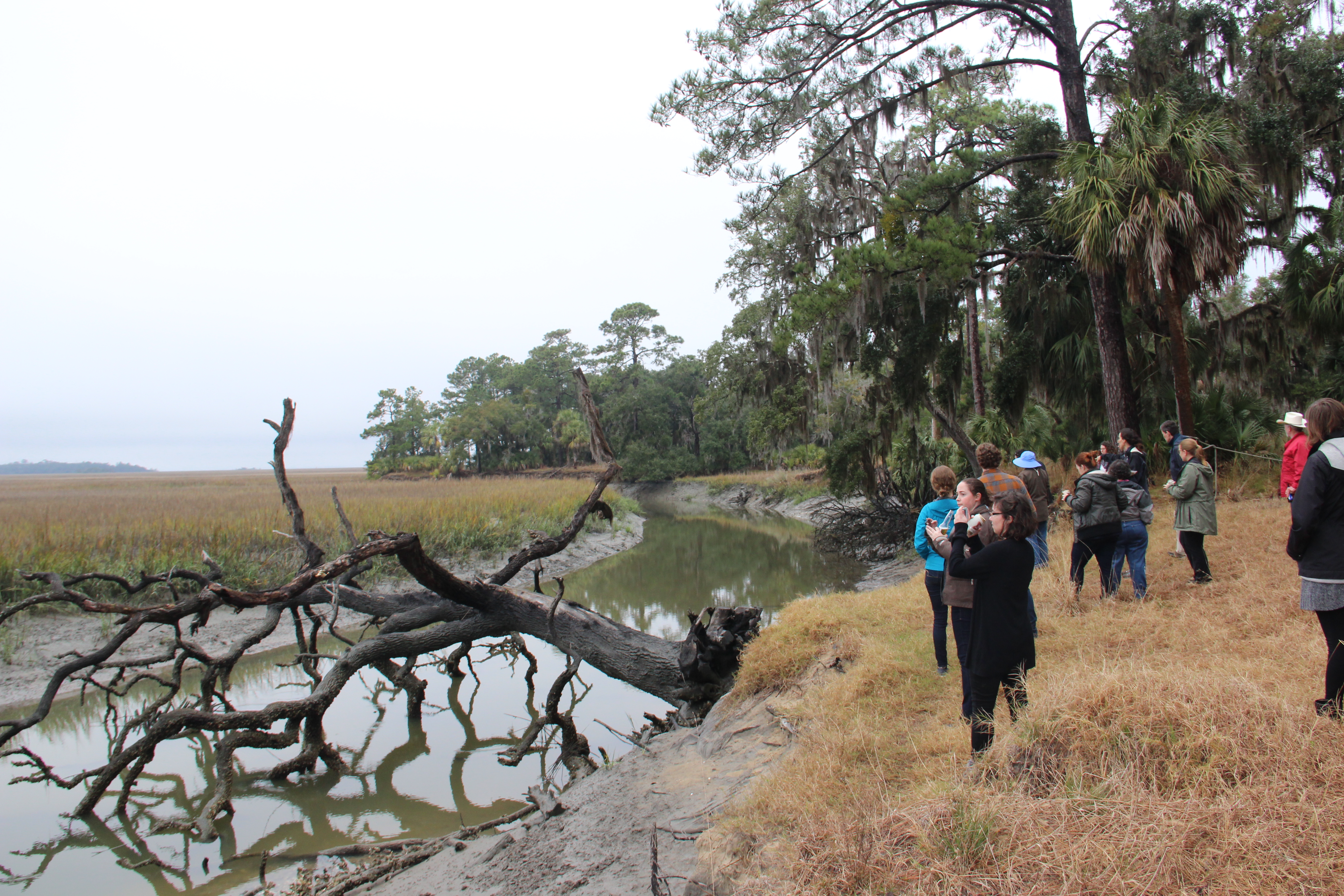Reconstructing the histories of those who lived long ago, piecing together their stories from DNA evidence as well as historical records, archaeological information, and insights from descendent communities, is part the work of Deborah Bolnick, associate professor of anthropology.
All of this is tied to efforts to gain a clearer, more unbiased picture of the past, and a better understanding of how historical events and social inequalities shape human genetic variation. In particular, she works with Indigenous partners and other researchers to investigate how colonialism impacted Native populations.
This Snapshot is a glimpse into one of her projects, based on St. Catherines Island off the coast of Georgia. The island was inhabited by Indigenous peoples for thousands of years, and was the site of one of the earliest Spanish missions during the colonial period. Here, Bolnick and her colleagues study the impacts of Spanish missionization on the Guale people in the 16th and 17th centuries.
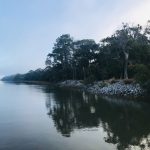
1-St Catherines Island
One of Bolnick’s research projects takes place on St. Catherine's Island off the coast of Georgia. The island was inhabited by Indigenous peoples for thousands of years, and was the site of the northernmost Spanish outpost along the Atlantic seaboard for a century during the early colonial period.
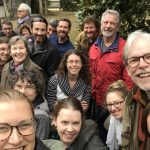
2-SCI bioarchaeology team
Last month, Bolnick and the bioarchaeology research team traveled to St. Catherines Island on the coast of Georgia. Led by David Hurst Thomas, Clark Spencer Larsen, and Anna Semon, the team includes Bolnick, University of Texas at Austin Ph.D. student Lauren Springs (not pictured), and researchers from the American Museum of Natural History, Ohio State University, University of Georgia, University of Alabama, Arizona State University, University of Louisville, University of North Carolina, and Johns Hopkins University.
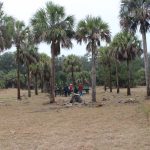
3-Santa Catalina de Guale site
The Mission Santa Catalina de Guale was probably established in the 1570s and occupied until 1680, when it was abandoned. After a five-year search, archaeologists from the American Museum of Natural History located this long-lost Franciscan mission in 1981. Today, palm trees mark the site of the mission church, which also served as the only known cemetery for the mission. Members of the mission community were buried beneath the church floor. (Caitria O’Shaughnessy Photo)
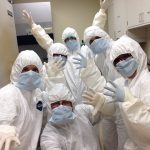
4-aDNA lab researchers
When working with ancient DNA, samples must be handled extremely carefully to avoid contamination from other sources of DNA. Researchers must work with full personal protective equipment in a carefully controlled ‘clean room’ lab environment. Researchers pictured: Lauren Springs, Deborah Bolnick, Austin Reynolds, Jaime Mata-Míguez, Aida Miró-Herrans, and Rick Smith. (Rick Smith Photo)
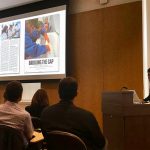
5-Brown aDNA conference
Bolnick recently discussed the ethical dimensions of ancient DNA research in North America at a conference at Brown University on the “State of the Field 2019: The Ancient DNA Revolution in Archaeology.” (Fernando Villanea Photo)
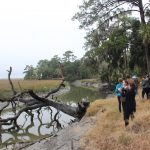
6-Fallen Tree site
Erosion along the banks of Wamassee Creek on St. Catherines Island caused a tree to fall in 2013, exposing a burial ground from the period just before and just after European contact. Intensive excavations followed to recover and protect burials threatened by erosion. Following consultation with appropriate Indigenous representatives, the St. Catherines Island Foundation partnered with multiple research groups to explore the archaeology, bioarchaeology, ancient DNA, stable isotopes, geophysics, radiocarbon dating, geoarchaeology, and ancient proteomics at the Fallen Tree site. (Caitria O’Shaughnessy Photo.)
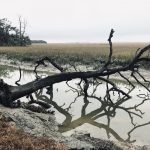
8-Fallen Tree site
Erosion along the banks of Wamassee Creek on St. Catherines Island caused a huge live oak to fall into the marsh in 2013, exposing a burial ground from the period just before and just after European contact. Intensive excavations followed to recover and protect burials threatened by erosion. The St. Catherines Island Foundation has partnered with multiple research groups to explore the archaeology, bioarchaeology, ancient DNA, stable isotopes, geophysics, radiocarbon dating, geoarchaeology, and ancient proteomics at the Fallen Tree site.
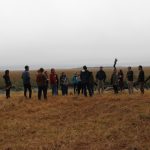
7-Fallen Tree site
The bioarchaeology research team visited the Fallen Tree site during their trip to the island last month. (Caitria O’Shaughnessy Photo)
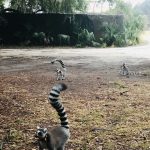
9-Lemurs on SCI
Interestingly, dozens of ringtail lemurs from Madagascar roam freely on St. Catherines Island! For decades, the St. Catherines Island Foundation has promoted the conservation of natural resources and the survival of endangered species, including the ringtail lemur. (Deborah Bolnick Photo)
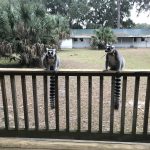
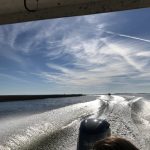
12-Leaving SCI
Leaving the island by boat to return to the mainland. Research on the island has long been supported by the St. Catherines Island and Edward John Noble foundations. (Deborah Bolnick Photo)
